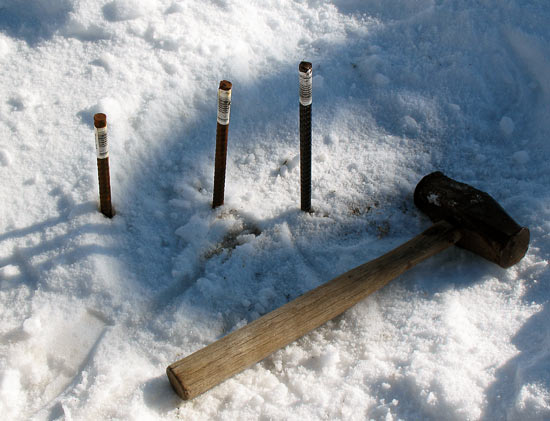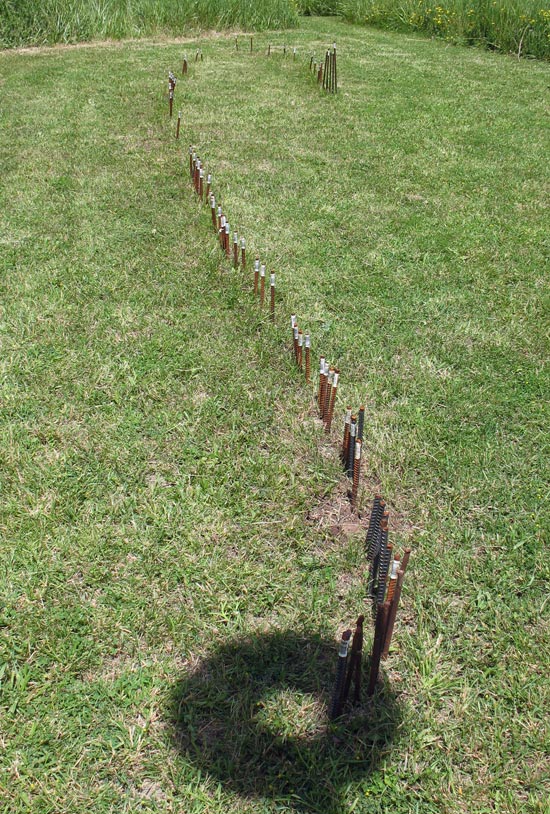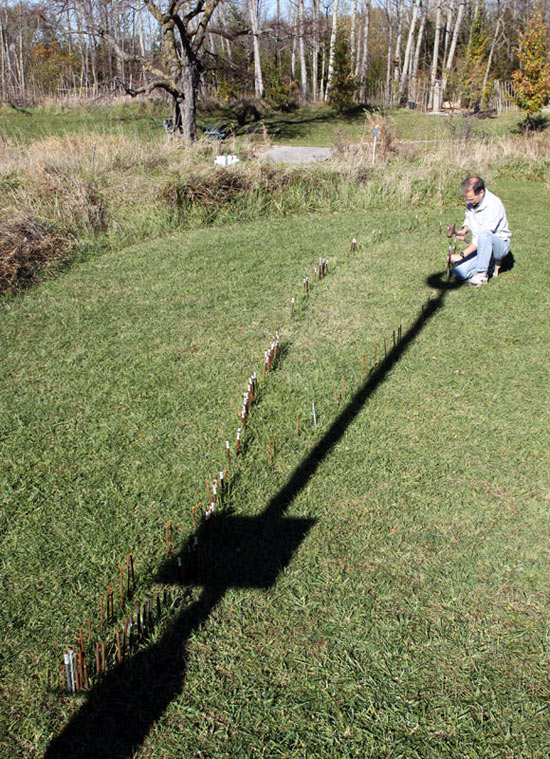

 |
This photograph shows the beginning of a new project next to Keppel Henge that started in November 2009. We've used the Keppel Henge site to create an analemma in the sky, and now with this disk we will be creating an analemma pattern on the ground. |
 |
This shows what the hole, or aperture bright spot looks like. We are hammering in short lengths of rebar to mark the centre of each day's bright spot. The time 12:22 p.m. was chosen since it is close to the yearly average transit time of the Sun at our location. |
 |
During the winter months the spacing between the marks was about 4 cm. from one day to the next. It wasn't too difficult dealing with the winter weather while locating the markers. There were only a few times that we had to use snowshoes to get to the site, and we only had to shovel down through the snow to ground level a dozen or so times. The biggest problem was a long cloudy period from late December into January when we couldn't place any markers. |
 |
Shortly before the Summer Solstice the pattern took a sharp turn inward as it reached its end point, and the Sun was at its greatest altitude for the year. |
 |
On the day of the Summer Solstice a group of about thirty-five people gathered at Keppel Henge to mark the occasion. We talked about the history of the henge, and how it works. Some members of the Bruce County Astronomical Society brought their solar telescopes, and we were able to observe the surface of the Sun. |
 |
By mid-November 2010 we had completed one year of markers, and the analemma pattern was complete. The interior section of the analemma pattern will be filled with cobblestones, and the analemma itself will be a strip of concrete set with a mosaic. |
 |
During the autumn of 2011 we will be using the marked pattern to construct a concrete and ceramic tile mosaic that will be colour coded to the different seasons. |
| Home Pg 2 Pg 3 Pg 4 Panorama Analemma Eclipse Sundial Solar System Aerial Pinhole Flare Star Trails Solargraph Analemma Pattern Contact |